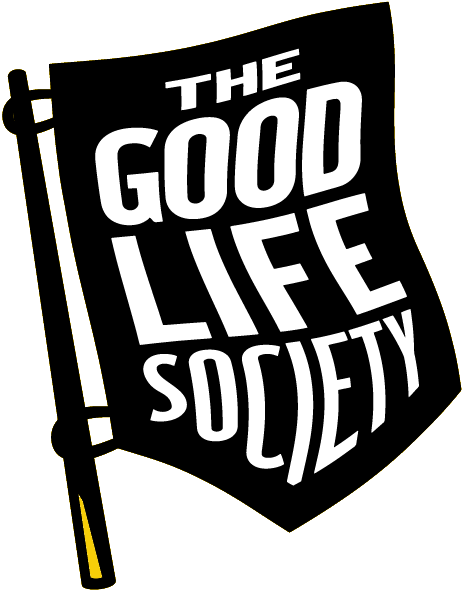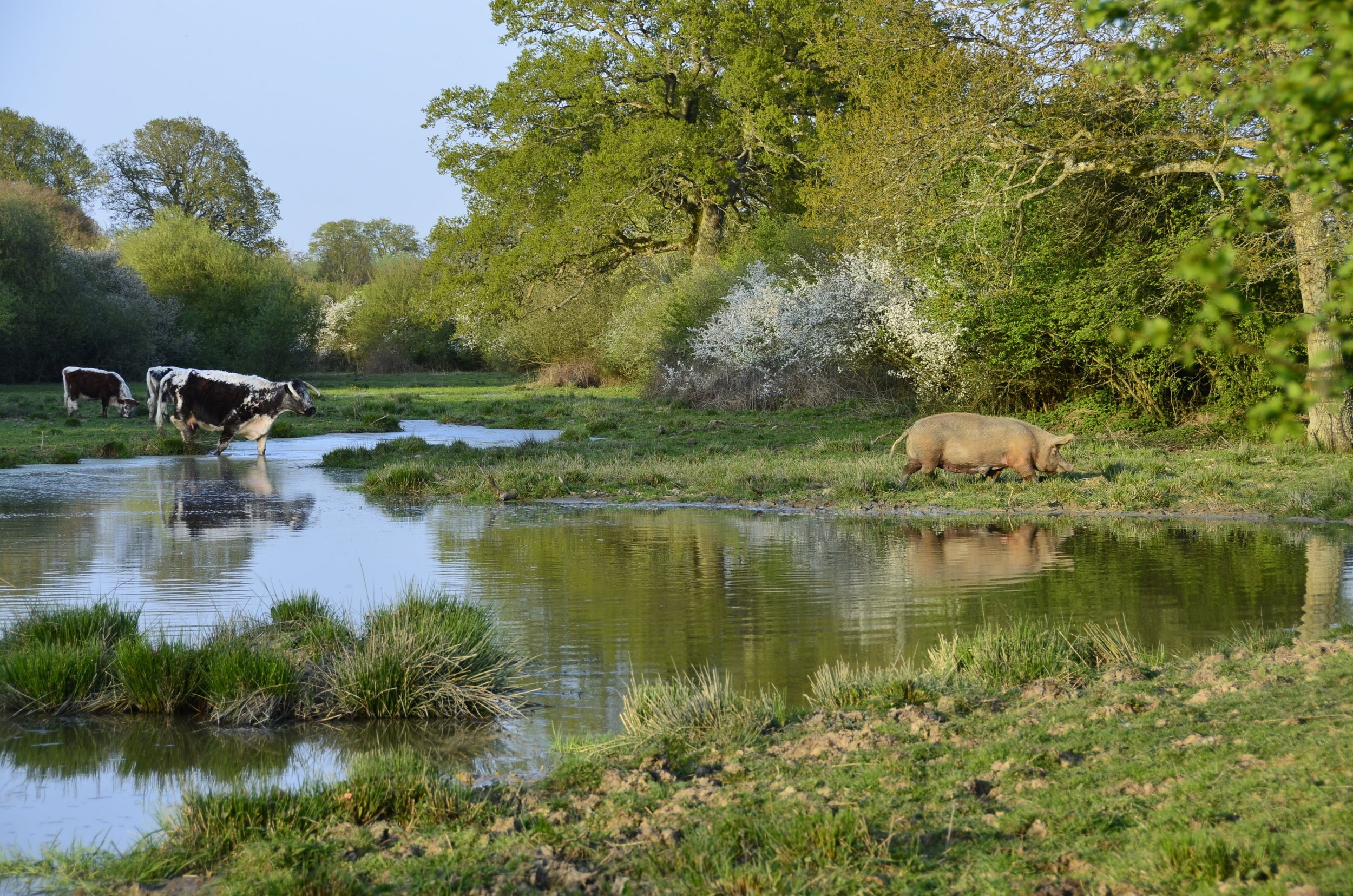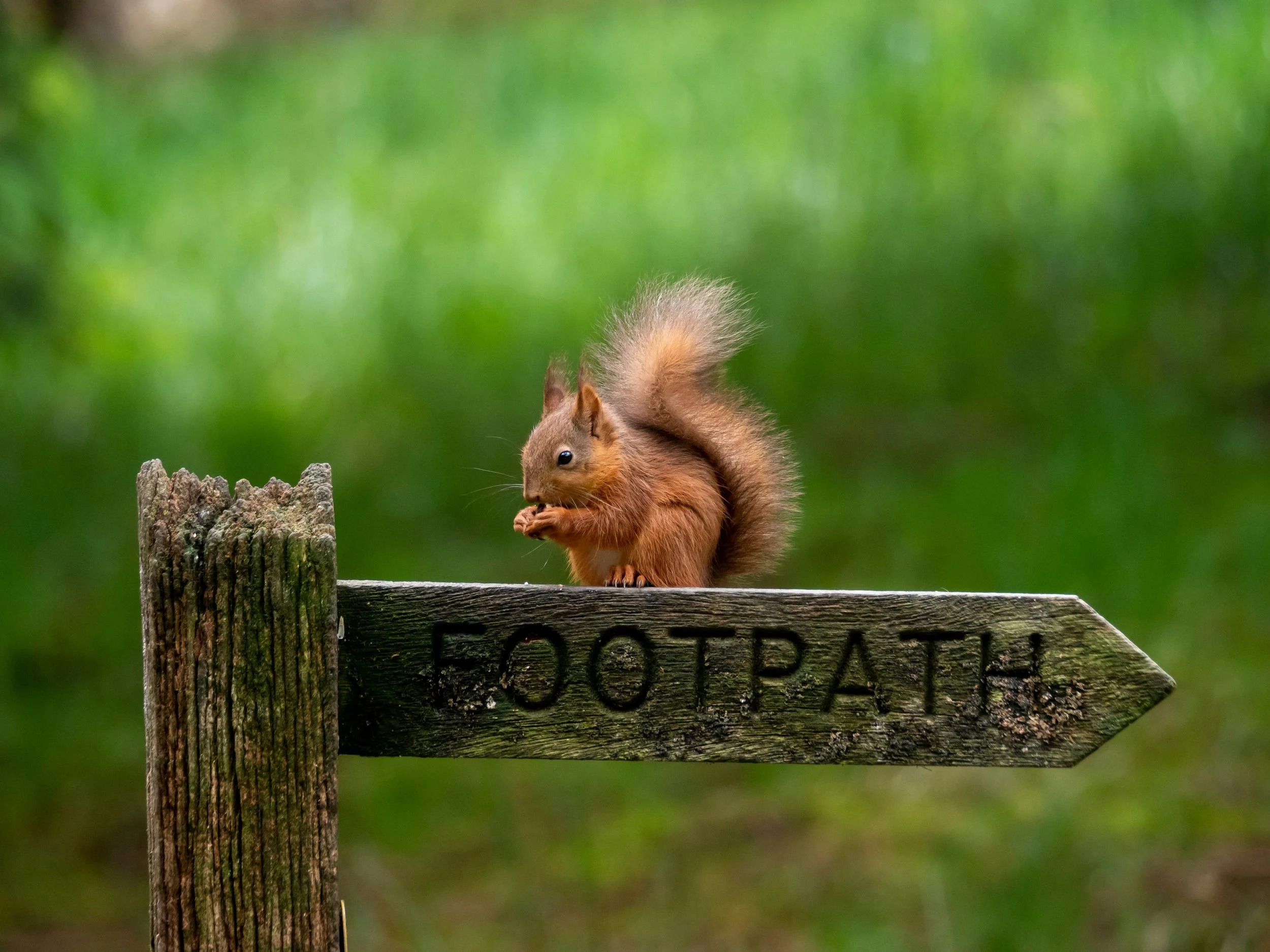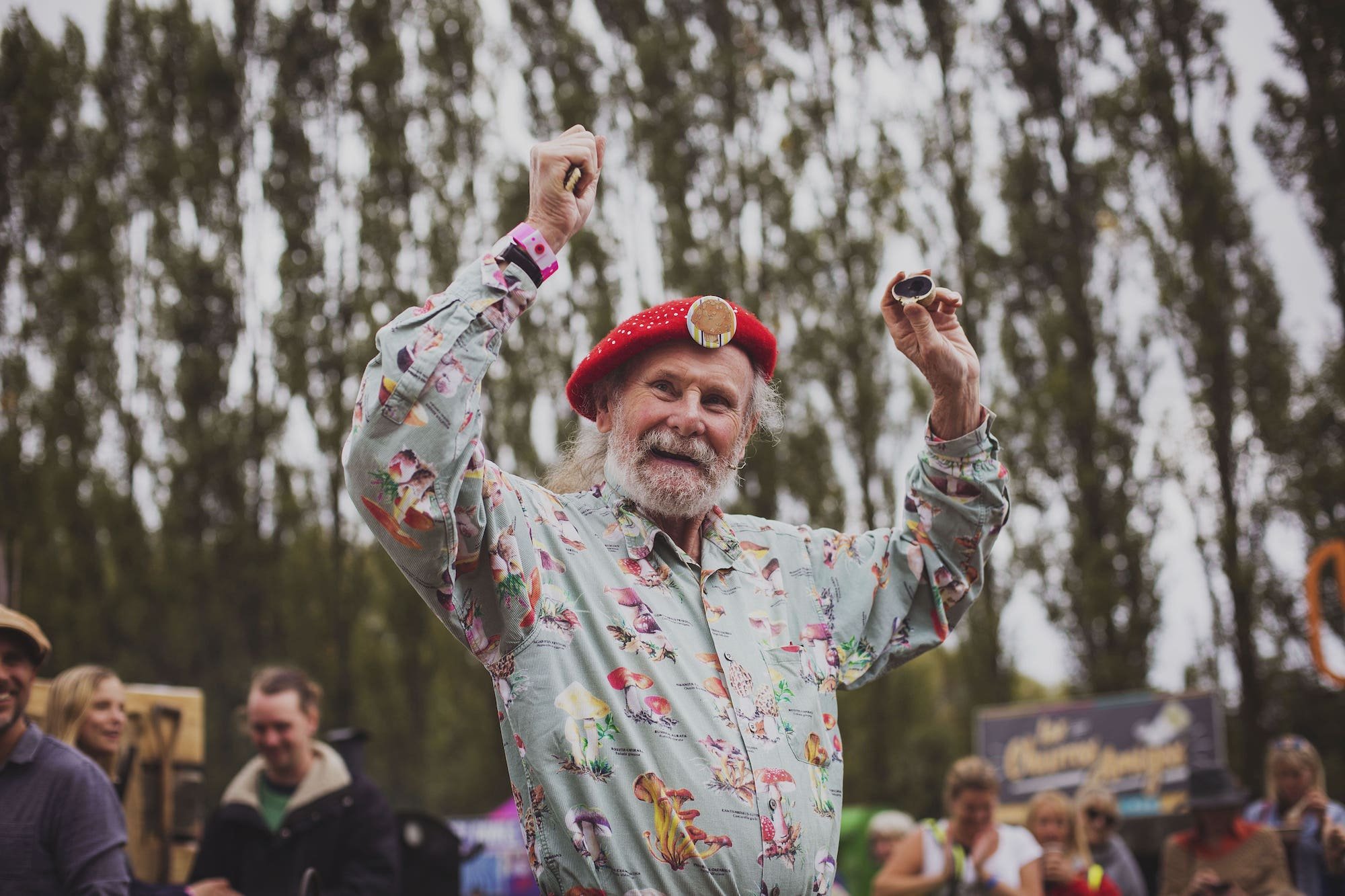Isabella Tree and the Rewilding Project.
INTERVIEW BY JIMMY SANDISONImage: Knepp Castle EstateIn 2002 Isabella Tree and her husband Charlie made a controversial decision to surrender their 3,500-acre estate to nature. Almost twenty years later, the land has been transformed entirely from its struggling conventional farming past into natural wilderness, teeming with life.
From the tree top canopies to the depths of soil, the successful upsurge of biodiversity at Knepp is exactly the positive story we need in an age crippled with climate crisis.
In response to the huge success of her book Wilding, a beautifully descriptive telling of ‘the return to nature of an English farm’, Isabella is currently writing The Wilding Handbook. The book is to guide and embrace everyone who wants to create a wilder landscape, whether that’s in a window box or on a larger scale project. She explains to me how, “re-wilding is one of the most accessible tools we have to combat climate change, by increasing biodiversity, allowing the soil to regenerate and to pull carbon from the atmosphere.”
Image: Knepp Castle EstateSome Good Ideas: Why do you think there has recently been an upsurge of interest in re-wilding projects?
Isabella Tree: I think people are feeling extremely stressed at the enormity of the problems in front of us. One of the solutions is to be able to do something positive and even if you have a tiny patch of land, if you can do something positive with it and know that you are sequestering just a little bit more carbon and contributing just a little bit more to biodiversity, that is a hugely positive physiological factor. That is the way to be able to live and deal with the enormity of the climate and extinction crisis.
We are all on a journey, and with our situation -as desperate as it was- we didn’t jump into re-wilding all in one go. You start in increments as you realise how wonderful and rewarding it is.”
Isabella Tree
SGI: The re-wilding project at Knepp was the first of its kind and a big risk. By seeing its success have other landowners been encouraged to do the same?
IT: Absolutely, having an example there to follow is massive, and I think that is why we have been so overwhelmed by the response. You can have many great books like Green and Prosperous Land by Dieter Helm, but they are about what we should do, not about what someone is doing and it is working. We still need more examples, we need more Knepps out there. People from another county might think, “well that’s okay for Sussex, but it’s not going to work in the same way here”. And of course, it will be different, but you need an example that it’s possible. There are other estates that are beginning to re-wild, Ken Hill on the North Norfolk coast has been inspired by Knepp.
There are lots more that we can’t talk about yet because they haven’t been made public. It’s happening, it’s really happening. The farm cluster movement is increasing, the government are encouraging farms to organise themselves into clusters, remove boundaries to produce projects that can be viable. They are not necessarily going to re-wild, but they are now thinking about how to create wildlife corridors and steppingstones. To leave corners in their fields that have never been really economic to farm anyway. To just let the land be, to let wet areas ‘wet up’ and hand it over to wildlife. We are all on a journey, and with our situation -as desperate as it was- we didn’t jump into re-wilding all in one go. You start in increments as you realise how wonderful and rewarding it is. And you also begin to understand the financial benefits. I think it’s rare for someone to press a button and say “let’s re-wild the whole thing”.
Image: Knepp Castle EstateSGI:You have just launched the Knepp Wild Range meat products can you tell us about the meat and the importance of having these herbivores?
IT: We are just beginning to sell online, with about 80% environmentally friendly packaging. We haven’t quite solved the plastic that you encase the meat with, but everything else is sustainable. We use sheep’s wool as the insulation of the packaging, which you can either return to us and we will wash it and reuse it, or you can simply put it in your compost bin. We have venison and beef and a little bit of pork. Everything is free roaming. We’re not supplementary feeding them, they’re eating everything out there… they are entirely pasture fed but they are browsing as well.
Browsing is eating twigs and leaves and bark. Cows originally weren’t just grass eaters; they were grazers and browsers. It’s important as there are not only nutrients but medicinal qualities in some of the bark. Particularly things like sallow -a naturally hybridising willow- which is where we get salicylic acid from, which is what aspirin derived from. Often we see the cattle and the deer eating sallow and we know it’s an astringent. It’s very good for aches and pains, it’s a hugely medicinal plant. Even though these are domesticated animals -our cattle at least and our pigs- they have these natural instincts that know how to self- medicate. They are really healthy, and our veterinary bills are minimal. Because they are eating entirely what they are meant to eat, rather than grains which they are not designed to eat, they are putting down much healthier fats.
The grazers are the drivers of dynamism and biodiversity in the landscape. So many of the arguments about not eating meat don’t apply here. It’s so important what the vegan and vegetarian movement has done, to make us think really carefully about what we are eating. Of course, intensive grain fed animals aren’t sustainable on any level, but I think we have to recognise how important herbivores are in the landscape. They were always here; we would have had billions of large herbivores; our landscape would have looked more like Serengeti. They are part of a nutrient cycle; the carbon cycle and they are also fantastic at kickstarting biodiversity. We have got to recognise the role that these large herbivores play.
Image: Knepp Castle EstateSGI: How do you manage the animal population numbers and know how many to slaughter for the meat?
IT: We go by what numbers we feel can survive outside in the winter. We think of the harshest possible winter we could have – and actually nowadays they are not that harsh- but sometimes they can be excessively wet, so there isn’t much grazing out there, so they are surviving mostly on browse. You think how many animals could make it through the winter in good health. We have very low stocking density, much lower than conservation grade standards, and nature reserves.
Animal population management is really important for the re-wilding project, you don’t ever want too many animals because you will get overgrazing and over browsing, and too much of an impact on the vegetation. And that is habitat for so many creatures. You want enough to stop the encroaching scrub taking over altogether, which would eventually turn into closed canopy woodland which is very species-poor. But equally, you don’t want too many because that would just turn the land into species-poor grassland. You want enough to battle with the scrub and the vegetation but not ever to win.
Image: Knepp Castle EstateSGI: Have there been mistakes along the way or things you would have done differently in retrospect? What surprising things have you learnt?
IT: Well the thing about re-wilding, it’s really a process led project. So you have no goals or targets particularly, other than hopefully increasing biodiversity; hoping that natural processes begin to happen on their own. It’s nature just preforming, so in that sense, I don’t think you can really talk about it in terms of mistakes. The only management we do is with the numbers of animals.
Early on we were advised by the RSPB and vets that we invited to come and look at the project that we couldn’t have bulls running with the herd. They were worried the bulls would be covering heifers that were too young and that the heifers might then have problems giving birth. Our herd had been doing that for several years and we possibly had one or two incidents where that had happened but compared with birthing problems in intensive farming systems that percentage was nothing. We personally felt the risk was minimal but it was at an early stage of the re-wilding project, so we capitulated and did what the vets said. I think it would be interesting to have the bulls running with the herd all year round – but you know that was a small thing.
In terms of management of the animals, we have been learning a lot. We have learnt how to walk the animals up, rather than chasing them on ponies or quadbikes, which is how we used to round them up at the beginning. We met this amazing guy called Bud Williams, who has now died, he was an American cattle whisperer. You can image how difficult it is to find cattle in the scrub, they just vanish, you can’t see them. Bud taught us a method of walking them up; getting them going at just the right speed, not too fast, not too slow. It has this kind of magnetic attraction for all the other animals hiding in the bush. They feel something going on that they have a compulsion to join. I think it must be a kind of migration instinct. They just come out of nowhere like drops of mercury. Even though it takes a bit of patience and you feel like you are going much slower, it saves hours and hours of time. And prevents animals from running around in the wrong direction, full of adrenalin and panic.
“We had turtledoves and nightingales and purple emperors, all of which are critically endangered in Britain. We are about to lose turtledoves forever from our shores. And suddenly Knepp has become a haven for the last of this species.”
Isabella Tree
SGI: How have you handled the negativity and controversy that surrounded the project?
IT: In the early days it was very, very difficult. But I think that it was understandable because our neighbours and surrounding farmers were looking at a piece of land that had been very orderly and managed and was just turning into creeping thistle, ragwort, docks, bracken, everything that is in a farmer’s DNA to absolutely hate. With every inch of their final breath, they would be trying to get rid of the stuff. And there we were, just allowing it to come back. So it’s a huge affront. It’s understandable, I think, how that felt for a lot of people. In the early days we tried to win hearts and minds, we invited people to come on farm walks, tractor and trailer rides to try and explain what we were doing. But only the people who were already halfway with us came. If you have got people who are absolutely stuck in their ways, they are not going to want to budge; they’re not going to even want to enter into a conversation. Our critics were the ones who were writing to our MPs, who were writing to their local press and they were the ones who didn’t come. Who wouldn’t come, even if we invited them personally.
Essentially, what speaks way louder is the evidence. 10 years into the project we suddenly had big headlines to shout about. We had turtledoves and nightingales and purple emperors, all of which are critically endangered in Britain. We are about to lose turtledoves forever from our shores. And suddenly Knepp has become a haven for the last of this species. People began to understand there is method in our madness. Local dog walkers who were carrying on walking on the same footpaths, watching the landscape change dramatically, suddenly heard birdsong and insects. We had one woman who wrote to us in the early days to say, “what you have done is an abomination, you have turned something very beautiful into an abomination”. Last year she wrote to us again and said, “I apologise for writing that letter, I was too quick off the mark, my sensibilities were insulted. What I now realise is that land at Knepp is still beautiful, but it is beautiful in a very different way”. I think people’s aesthetics do change with experience, but it takes a while for that to happen. And no amount of arguing or explaining is going to change that aesthetic, it’s actually just by experiencing it.
Image: Knepp Castle EstateSGI:What exciting news is there from Knepp?
IT: We are just about to get beavers! Our licence application was granted by the government, so with any luck we’ll be getting two pairs of beavers by Spring. If we can get the infrastructure, such as proofing culverts so they can’t leave our territory, if not they will be here in the Autumn. That is a huge excitement for us, they are a missing keystone species. There would have been millions of beavers in Britain in the past. Our landscape would have look very different because of them. Our wetlands would have been managed, we would have had complex hydrological systems with deep pools and huge biodiversity created by the beavers. They also create soil itself because their damns hold back silt. They are hugely important creatures and to have them back in our landscape is going to be so thrilling.
Another exciting thing is our white storks. They are bill clattering at the moment on the top of an oak tree. They tried to nest last year -the first free-flying pair of stalks- they created this big shaggy nest on top of an oak tree, but their eggs weren’t fertile because they were too young. We are hoping they will try again as this year. We’re hoping they are now sexually mature, and we will have the first free-flying British white stalks born since the English Civil War.
SGI: WOW! That is so incredible and so great to hear such positive news. Thank you, Isabella.









